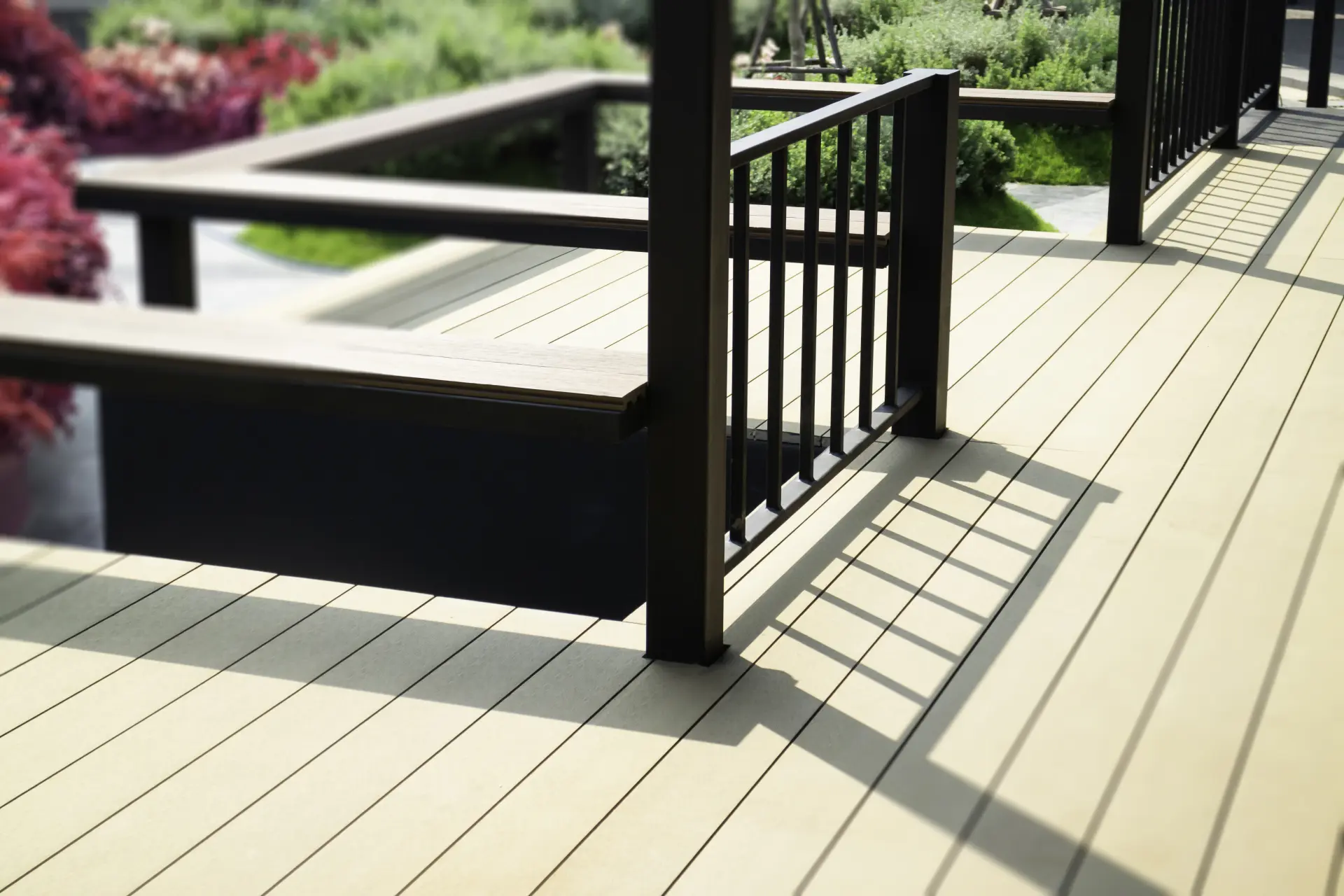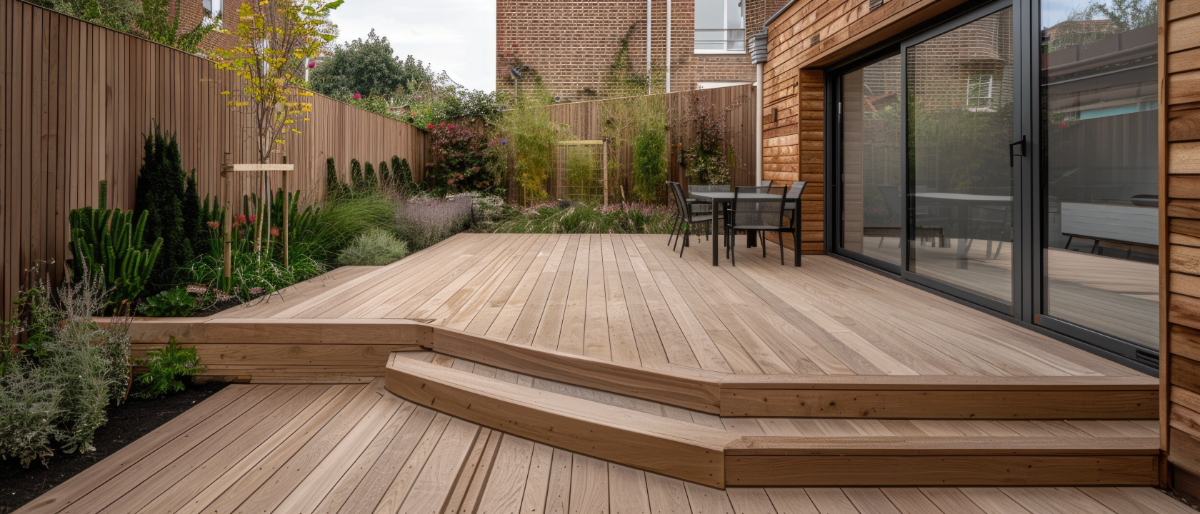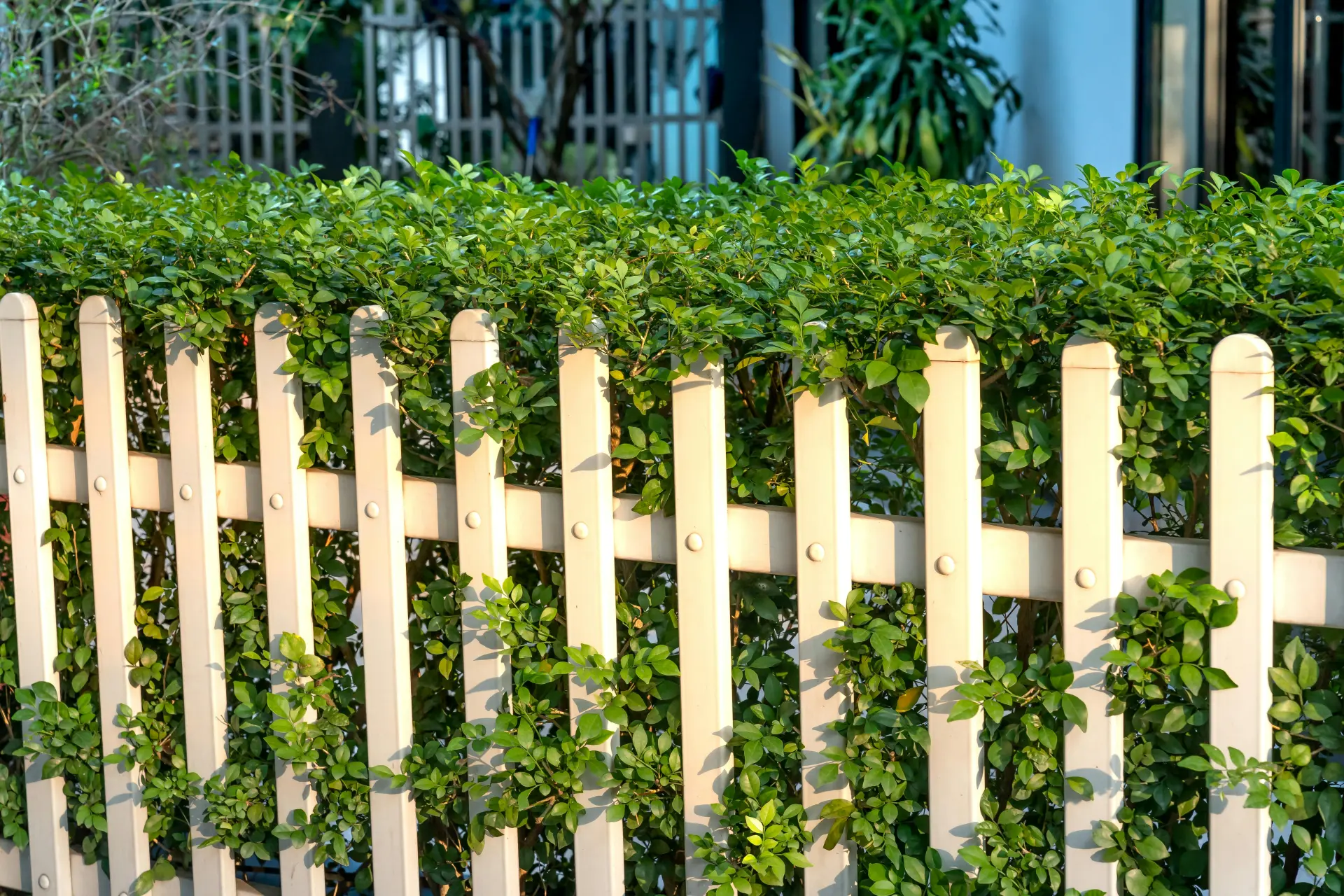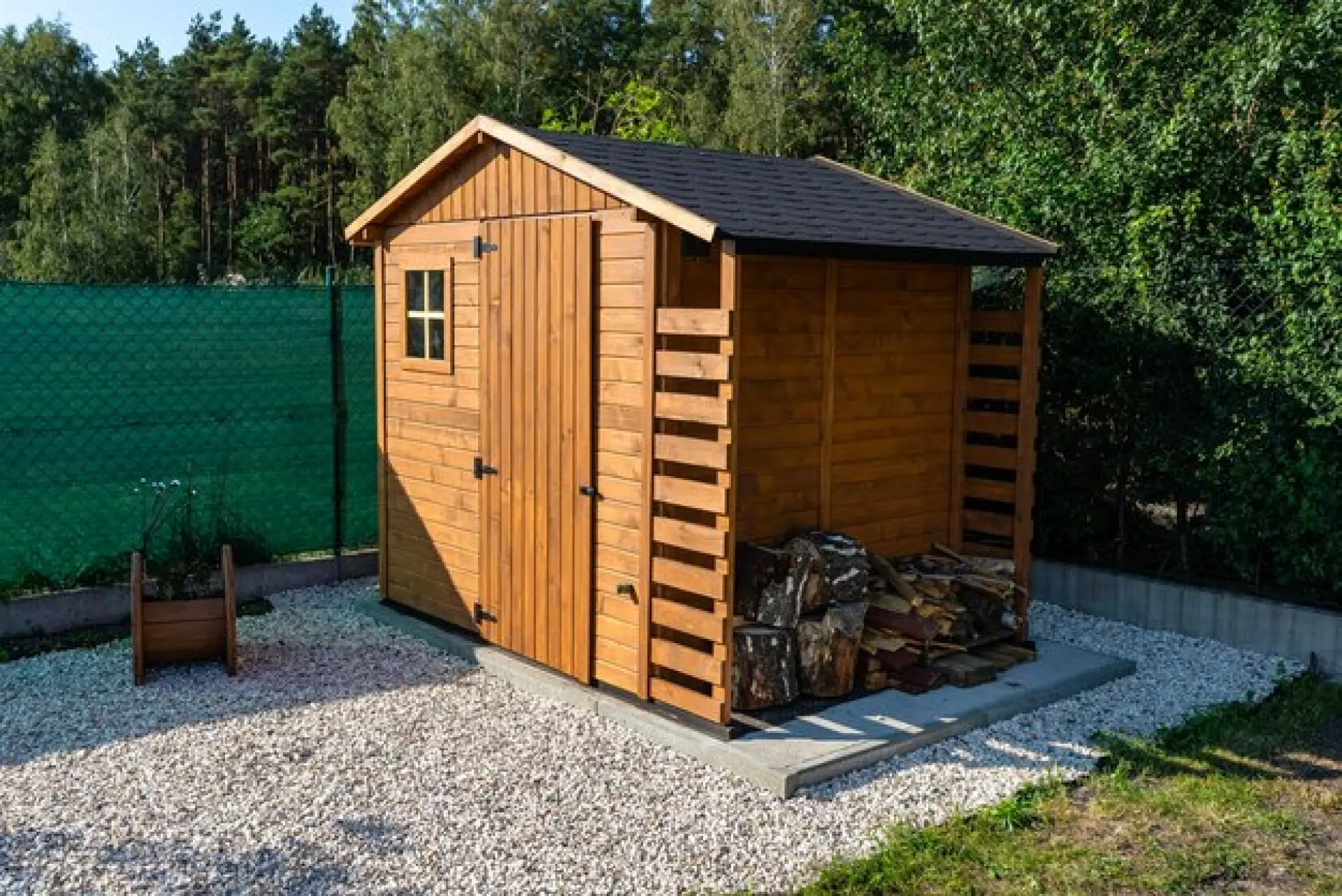Discover The Pros and Cons of Wood vs Composite Decking? Understand the benefits of each for your garden. Detailed comparisons on lifespan, maintenance, and more.
What Is Wood Decking?
Wood decking is a type of outdoor surface made from timber boards used to create a flat or raised area in a garden or patio. It brings a natural, warm look to outdoor spaces and can suit both traditional and modern styles.
There are two main types of wood used for decking: softwood and hardwood. Softwood, such as pine, is more affordable and easy to work with. Hardwood, like oak or teak, is much denser and more so chosen for its rich colour and strong feel. Wood decking can also be stained or painted in a number of colours, making it easy to match your personal style.
Softwood, such as pine or spruce, is one of the most used woods for garden decking, especially where budget and ease of installation are important. It’s usually chosen for family gardens, patios or small outdoor spaces.
Softwood can be cut and shaped easily, making it suitable for custom designs or DIY projects. It’s also ideal for areas where you may want to stain or paint the boards in a particular colour to match your garden style.
Hardwood, like oak, teak or iroko, is denser and stronger. It's often used in larger or more high-end garden designs or in places where a long-lasting and premium finish is wanted.
Hardwood decking is a good choice for areas with a lot of foot traffic, such as outdoor seating areas, entertainment spaces or pathways. It's natural colours and grain patterns give a rich and elegant look, often left untreated, to show off the wood's natural beauty.
Each type has its own strengths, and the best choice depends on how you plan to use your decking and the style you want to achieve.
What Is Composite Decking?
Composite decking is a modern type of outdoor flooring which is designed from a number of different wood fibres and plastic materials. It is made to look like natural wood but with added strength and durability.
The boards come in a range of colours and finishes, including shades of grey, brown and black, giving you plenty of choice to match your garden style. This type of decking is often chosen for its clean, modern look and long-lasting design. It does not splinter or crack like some types of wood and has a smooth, even surface.
Composite decking can be quite a common choice for gardens, patios, and outdoor seating areas where a smart, low-fuss finish is desired.
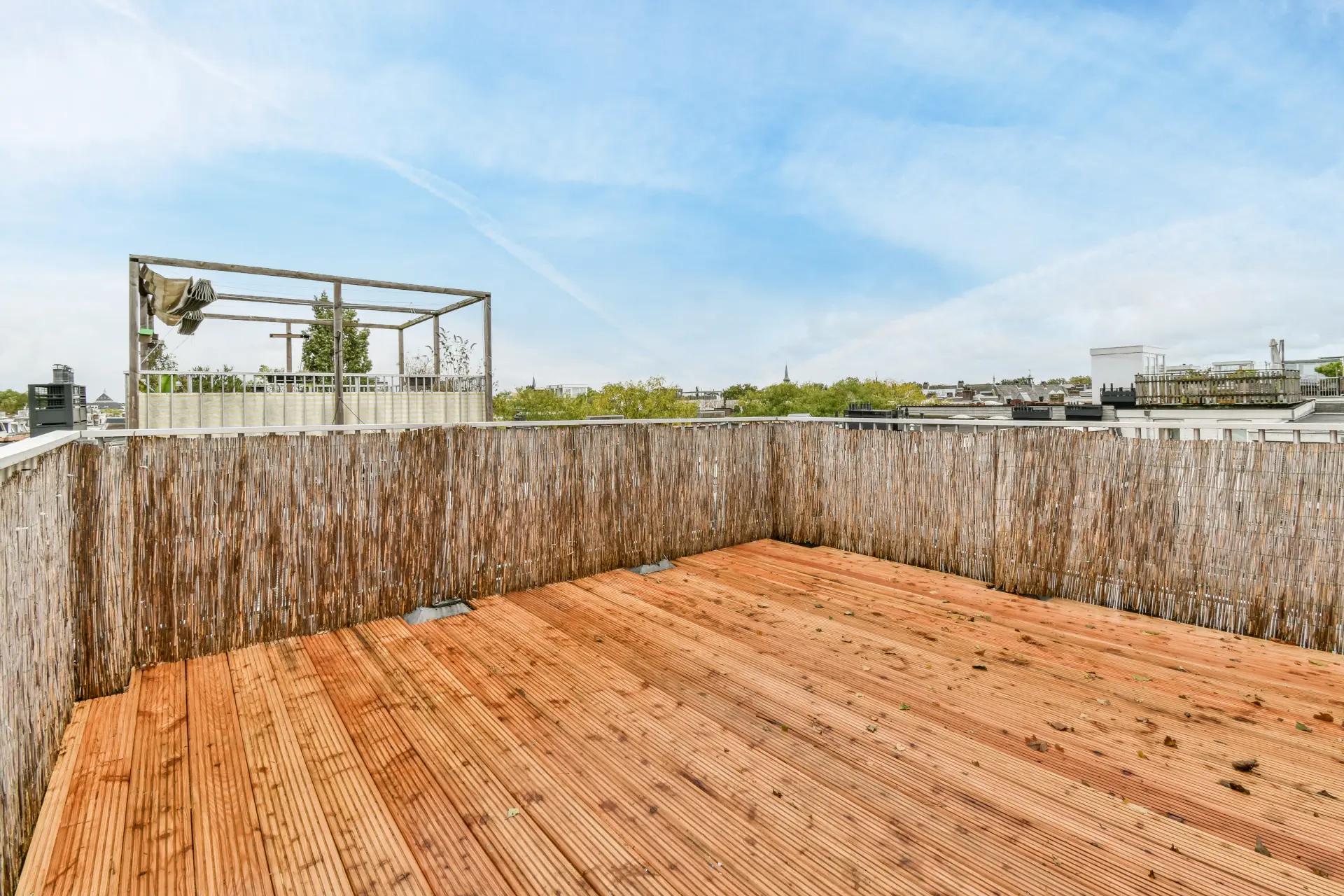
How Long Do They Last?
The lifespan of decking depends largely on the material used and how well it is looked after throughout each season. Wood decking, such as softwood, usually lasts around 10 to 15 years if properly maintained. This includes regular cleaning, sealing and treating to protect it from weather and wear. Hardwood decking, like oak or teak, is stronger and more resistant to damage and can last up to 25 years or more when well cared for.
Composite decking is created to last even longer, often between 25 to 30 years or more. It is made from a mix of wood fibres and plastic, which makes it more resistant to rot, fading, splintering and insect damage. Unlike wood, it doesn’t need painting or sealing to keep its appearance.
While both wood and composite decking can offer many years of use, composite decking usually provides a longer lifespan with less ongoing maintenance, making it a popular choice for those wanting a more durable and low-fuss option.
Maintenance Needs
The maintenance needs for decking vary depending on the material. Wood decking, especially softwood, needs plenty of care throughout each year to stay in good condition. This can often include cleaning, staining or painting, and sealing to avoid any moisture damage, rot or fading.
Hardwood decking also needs maintenance, though less often, to keep its natural look and strength over time.
Composite decking, on the other hand, is much easier to look after as time passes. It doesn’t need to be constantly re-painted, stained or sealed.
A simple wash with water and a mild cleaner is usually enough to keep it clean. It also resists any mould, fading and splintering, which makes it a low-maintenance choice for homeowners with busy households or those wanting a long-lasting finish with less effort.
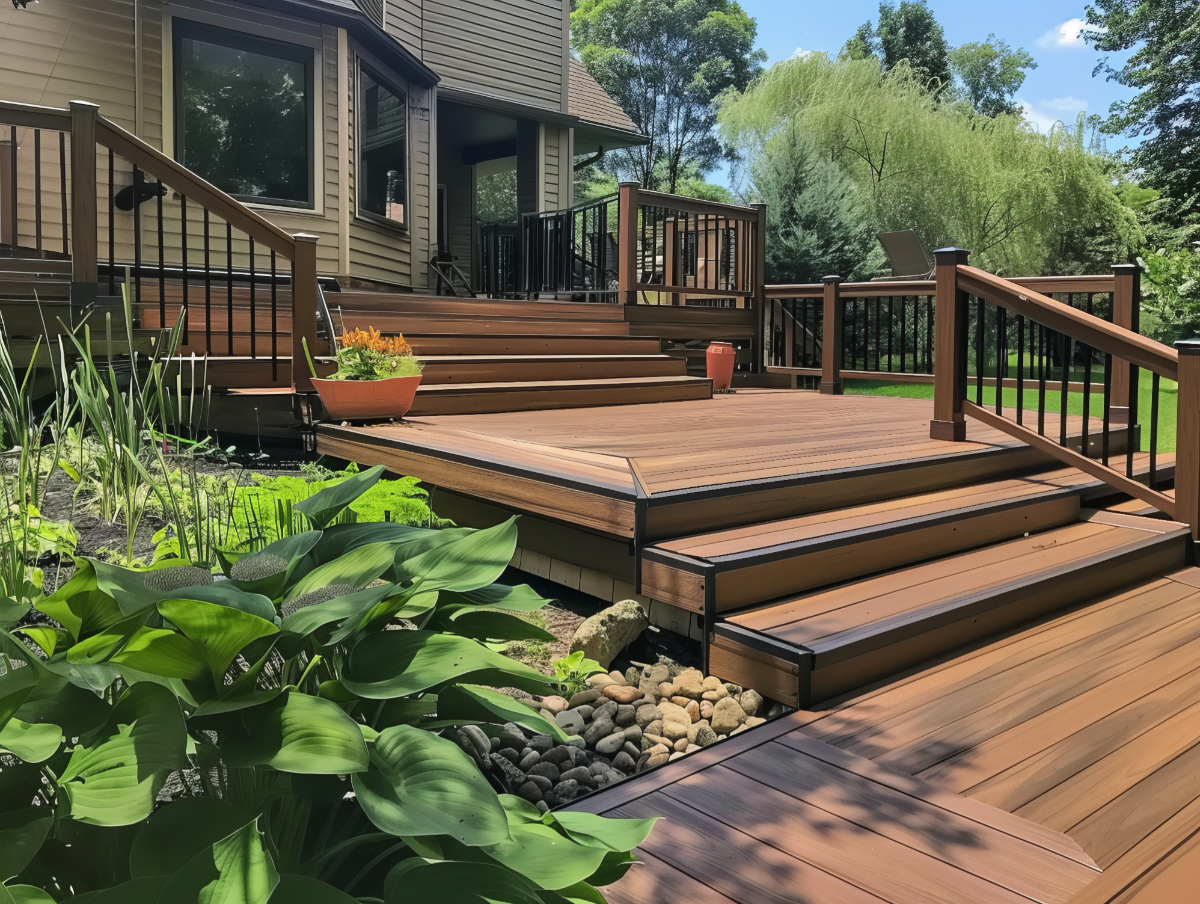
Which One Is Right for Your Garden?
Deciding between composite and wood can be tricky, but it will all come down to what you desire for your garden or outdoor space. Wood decking is ideal if you're looking for something natural and don't mind doing a bit more frequent upkeep. It offers plenty of visual warmth and traditional charm. Keep in mind that softwood is much more affordable, whereas hardwood, whilst a bit more costly, offers a stronger, longer-lasting finish.
Composite decking is better suited if you want something more modern and low-maintenance. It doesn’t need painting, staining or sealing, and it resists fading, rotting and splintering. This makes it ideal for busy households or those looking for a long-lasting, hassle-free option.
Both options have their own benefits, so the right one for your garden comes down to your budget, style and how much time you want to spend on care.
Tony Malpass offers decking supply for Darwen, Blackburn, Bolton and Preston. Give our team a call today and begin discussing your ideas and needs regarding outdoor decking.

